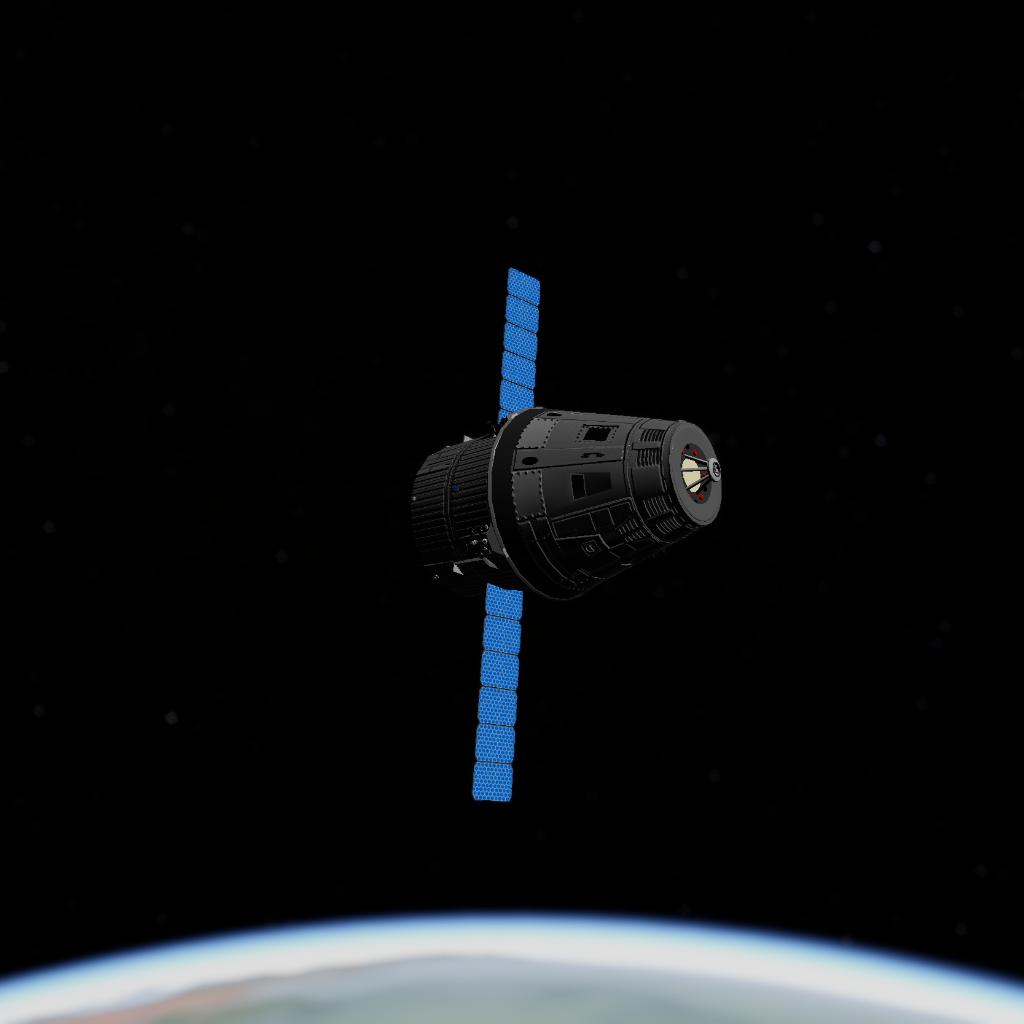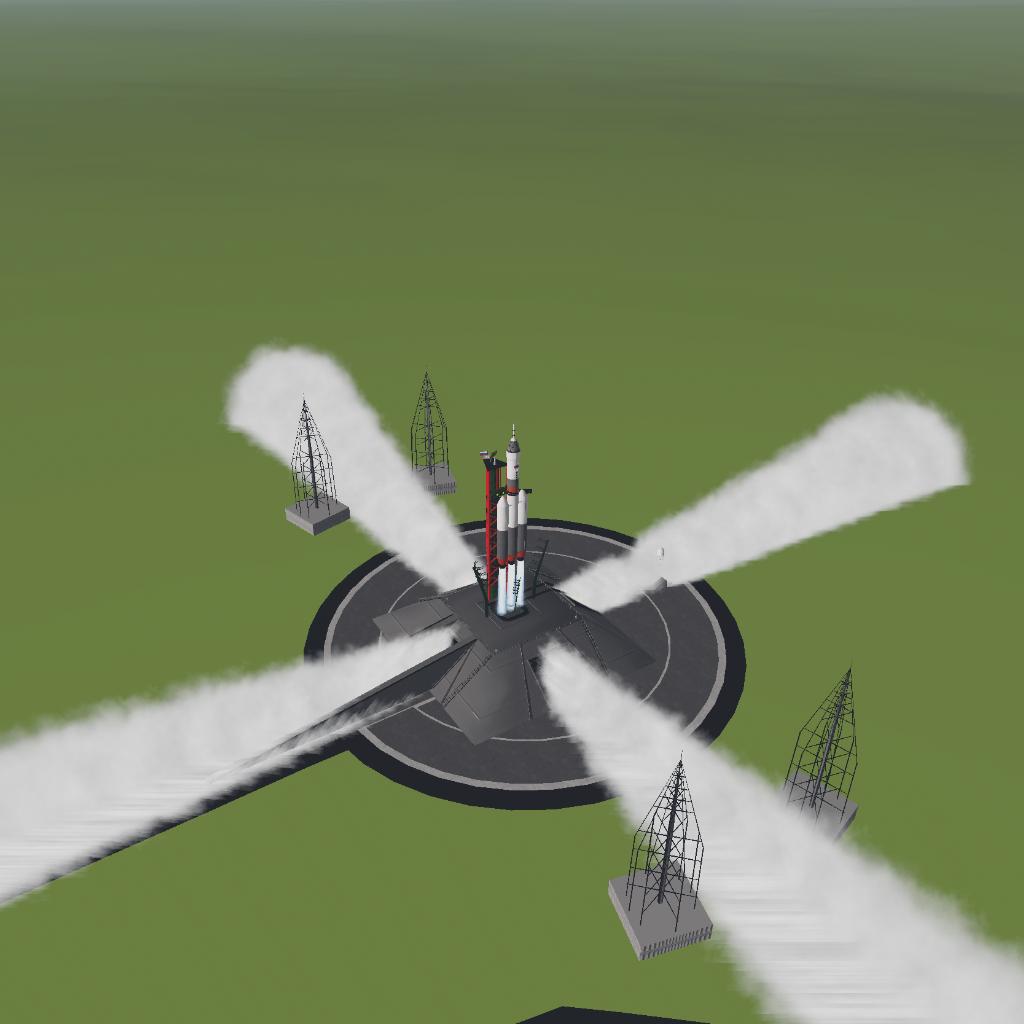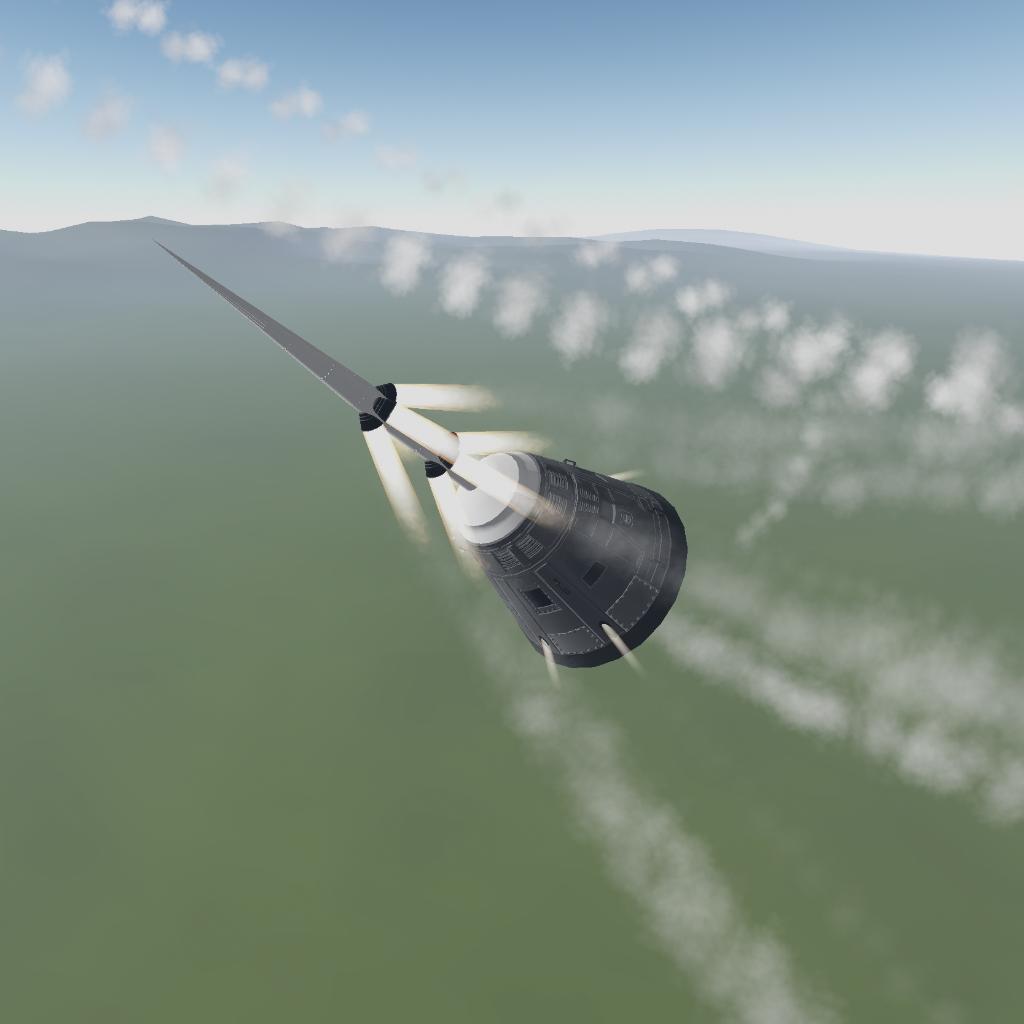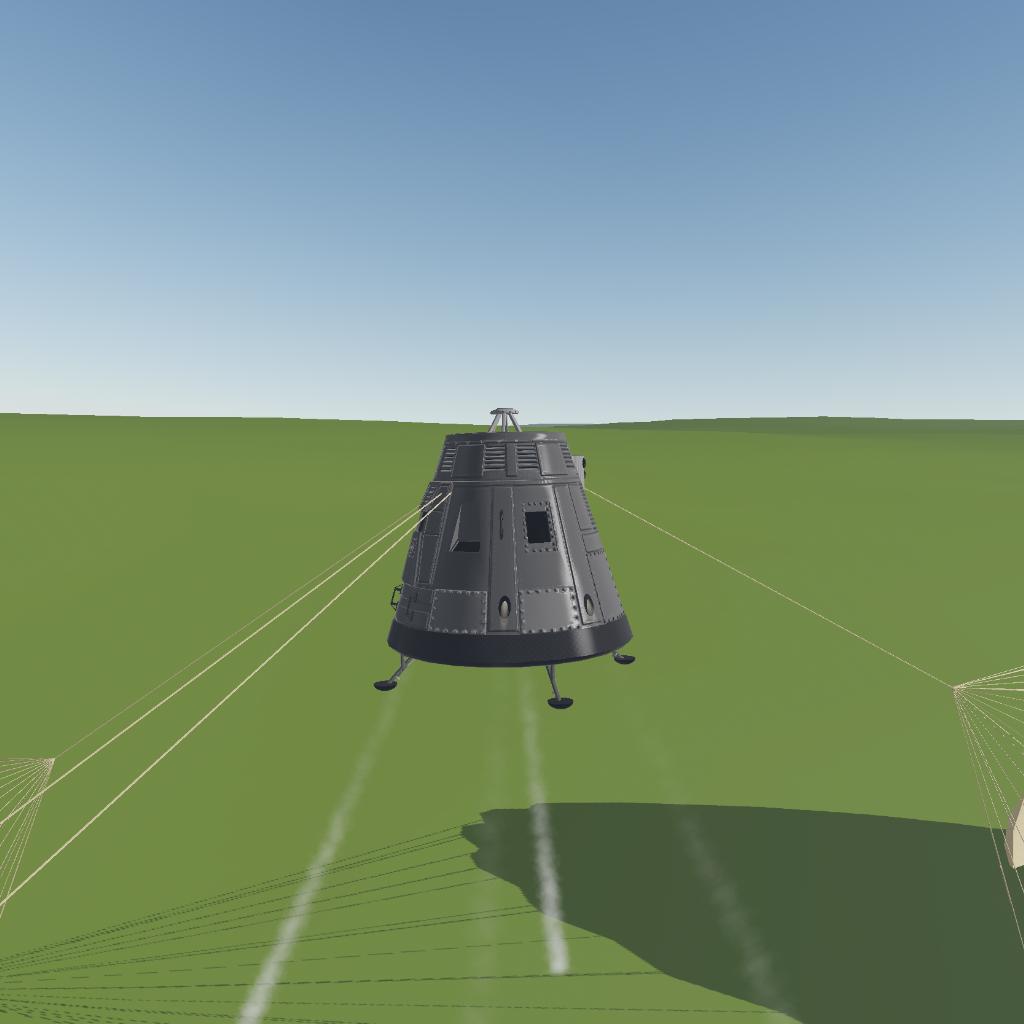Hello Sr2 community! After 2 months of hard work, I have finally created the final version of my 2025 Soyuz 5 with the legendary PTK Federatsiya Spacecraft! Please take your time to read the description and instructions so you can better understand the build.

Specifications for running this craft in computers:
This involves
Always listen to the Vizzy program!
physics settings at high
craft visual effects high
launch steam off
most settings high or medium
Specifications for mobile users:
Since I built this craft in an iPad Air 3, I had to take some measures to be able to run this craft successfully. Here are some tips for mobile users:
Always listen to the Vizzy program!
physics settings on high
launch steam off
craft visual effects on high or medium
the rest of the graphics settings on medium or low depending on how powerful your mobile device is.
Components and features of the craft:
-launchpad

The launch pad is in fictional design. It is not based on any other launchpad. It is a launchpad that looks cool on the craft and blends in with the beauty of rocket. This launchpad is the most difficult launchpad I have created, and it includes surprising features that has never been implemented in sr2. Let’s take a look.
fuel lines:
I created an innovative design that replicates the beautiful effect of detaching fuel lines from a rocket. As many of you noticed, many rocket have fuel lines that refuel the rocket just before liftoff and detaches before it lifts the ground. Now you can experience this cool effect right in Sr2!

Support beams for rocket:
Every rocket on a launchpad need some support to keep it upright! In my launchpad, I implemented state of the art support with a Russian touch. Since the rocket comes straight from Roscosmos, I wanted to a a bit of “Soyuz” into it. Besides, it’s the Soyuz 5!

Bridge:
There is nothing much to include here. Most launchpads have a bridge to transport astronauts to the capsule. I put 2 astronauts in the bridge but feel free to include 5 astronauts. I included some glass so the astronauts don’t accidentally fall to their death!

The rocket:

As I stated earlier, the rocket is a a replica of the Soyuz 5, a rocket designated to be constructed in 2025. I included a vizzy program to get the rocket to orbit for you automatically. Remember to Always listen to the Vizzy program! So sit back, relax, and enjoy the ride! Here is some basic info I got from the Russian Space Website.
Despite severe cuts in its space budget at the end of 2015, the Russian government gave the go ahead to the development of a new launcher family, which could finally replace the legendary Soyuz rockets after seven decades in service. Moreover, the new rocket was also positioned as a stepping stone toward the super-heavy booster to carry a next-generation manned spacecraft into deep space.
In 2013, engineers at TsSKB Progress in the Russian city of Samara began preliminary work on a new rocket series dubbed Soyuz-5. The new booster could cut cost of space transportation thanks to its reliance on new engines burning environmentally safe and widely available propellant made out of cryogenically cooled natural gas (or methane) instead of traditional kerosene fuel.
Soyuz-5 could eventually replace current rockets in the Soyuz family capable of delivering up to eight tons of payload to the low Earth orbit. Moreover, follow-on variants could carry 16 tons, thus replacing Zenit, and 25 tons, matching Proton in the current Russian fleet. Farther into the future, Soyuz-5 could pave the way to heavy and super-heavy rockets, as well as to low-cost reusable space boosters.
Despite being christened as a part of the Soyuz family, Soyuz-5 would look nothing like the classic space launcher that opened the space era. Instead, it would use a modular design enabling to form three or four rockets in different mass categories. The design of Soyuz-5 would also be adaptable for an entirely new class of heavy launchers. (653) TsSKB Progress was expected to bring Soyuz-5 concepts to any future tenders offered by Roskosmos for the development of launch vehicles to follow the Angara family.
For more info, plz visit http://www.russianspaceweb.com/soyuz5.html

I also included a state of the art escape system, with one little explosion ejecting the capsule to safety as the rocket explodes behind. Trust me, this could save the astronauts lives!

PTK Federatsiya spacecraft:
Here is some info on the PTK Federatsiya spacecraft directly from the Russian Space Website.

In June 2011, Russian engineers were putting finishing touches on the life-size model of a new manned vehicle designed to carry Russian cosmonauts into orbit in the 21st century. The full-scale mockup, including the interior of the six-seat cabin, was to be ready in August, just in time for the Moscow Air and Space Show, MAKS, held at the Zhukovsky airfield.
The spacecraft, known so far only as PTK NP, which stands for the New Generation Piloted Transport Spacecraft, will replace venerable Soyuz, as the nation’s manned space vehicle.
After several years of initial studies, the preliminary design of PTK NP was started at the beginning of 2009 and was completed a year later. In 2011, the second stage of development, known as Technical Project, was underway, with RKK Energia based in the town of Korolev on northeastern outskirts of Moscow, serving as the main contractor.
During Paris Air and Space Show in Le Bourget, RKK Energia presented scaled models and blueprints of the PTK NP spacecraft, which featured a number of changes to the design of the vehicle comparing to its previous revision shown to the public in 2009. At the time, the crew module of the spacecraft was to be protected during the reentry into the Earth atmosphere with two types of reusable tiles placed in a brick-like pattern, resembling that of the US Space Shuttle. However the latest depiction of the vehicle reveals monolith panels, which most likely would have to be replaced after each mission. Still, two types of protective surfaces were used: a dark material on the side of the vehicle which would experience the highest temperature during the reentry and a light material on less critical areas of the module. Also, the crew module lost its chin-like gondola, which was originally intended to contain attitude control thrusters. Both changes were expected since 2010.
Refining of the spacecraft design and detailing of its components was the main purpose of the latest phase of development. In addition to the work on blueprints and manufacturing of various elements for experiments, the Technical Project also included the construction of full-scale prototypes of the spacecraft. Engineers would often need numerous mockups to model various aspects of the design, particularly the layout of the interior and ergonomics of the cabin. This work was actually started during the preliminary design as a largely informal initiative by Russian cosmonaut and RKK Energia engineer, Yuri Usachev. He used mostly wood to mock up various details of the interior of the future spacecraft. This work eventually attracted the attention of the wider team involved into the PTK NP project.
During 2011, RKK Energia also reportedly continued issuing technical assignments and mass requirements to its sub-contractors and worked on preparing experiments to validate most critical technologies of the project.
For more info, plz visit http://www.russianspaceweb.com/acts.html

The description is done. If you have any questions or concerns feel free to comment, I’m always active for a few weeks for that matter. I hope you enjoy the craft and have a splendid day!
Next build: lunar base upgrade!
GENERAL INFO
- Predecessor: Soyuz 5 with PTK Federatsiya Spacecraft 1.5
- Created On: iOS
- Game Version: 0.9.509.0
- Price: $691,220k
- Number of Parts: 2403
- Dimensions: 121 m x 277 m x 415 m
PERFORMANCE
- Total Delta V: 28.1km/s
- Total Thrust: 123.4MN
- Engines: 66
- Wet Mass: 3.15E+6kg
- Dry Mass: -9,065,783kg
STAGES
| Stage | Engines | Delta V | Thrust | Burn | Mass |
|---|---|---|---|---|---|
| 1 | 9 | 2.3km/s | 86.1MN | 94.46days | 3.15E+6kg |
| 3 | 0 | 0m/s | 0N | 0s | 9.63E+5kg |
| 4 | 4 | 2.7km/s | 4.5MN | 2.7m | 4.4E+5kg |
| 5 | 34 | 2.8km/s | 602kN | 5.3m | 98,671kg |
| 7 | 4 | 20.4km/s | 171kN | 2.3m | 7,002kg |
14 Comments
- Log in to leave a comment
-
-
4,058 Mikel85.0 years ago
@Davidtheduke can you check that ?
https://www.simplerockets.com/c/86MawI/The-Apollo-Saturn-V -
3,292 Davidtheduke5.0 years ago
I made the fuel lines by some fuel tanks and some rotators. @0BL1V10N5_PH03N1X
-
-
-
-
-
-
-
-
-
3,292 Davidtheduke5.1 years ago
Thanks! Wait till you see the refuel lines that I created.... they look splendid! @Reeseek_Puffs
-










hope doesnt blow up again